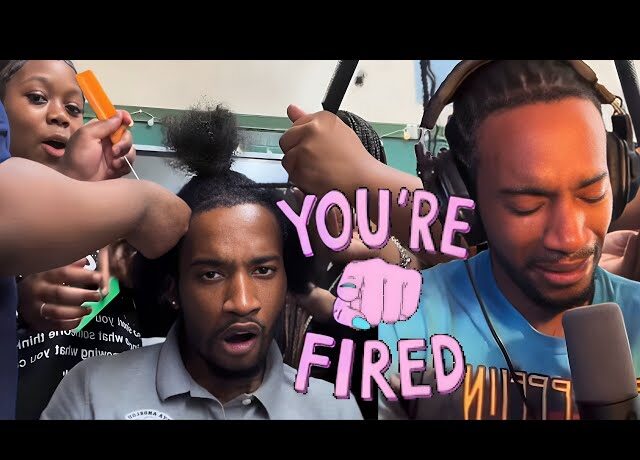The recent incident of students unbraiding teachers hair fired has sparked considerable debate both online and in educational circles. What might have seemed like a playful or innocent act has escalated into a serious issue, leading to the students involved being fired from school. This incident has brought to light the complexities of school discipline, cultural sensitivity, and the fine line between innocent behavior and disrespect in an educational setting.
In this article, we’ll explore the details of the situation, the reasoning behind the school’s decision, and the broader implications for students, teachers, and school policies. Why were these students unbraiding teachers hair fired, and what lessons can be drawn from the incident?
H1: The Incident: What Happened?
H2: The Context: A Regular Day in Class
The day began like any other in the classroom. The teacher was leading a lesson, and students were engaged in the day’s activities. However, the mood shifted when a group of students decided to interact with their teacher in a manner that crossed personal boundaries: they began unbraiding her hair.
H2: The Act of Unbraiding: An Innocent Gesture or Disrespect?
While unbraiding hair might seem like a harmless act, especially to young students, it holds significant personal and cultural meaning. In many communities, hair is considered a sacred and deeply personal aspect of identity. What may have started as a playful gesture quickly escalated into a perceived act of disrespect. The result? These students unbraiding teachers hair fired from school.
H3: Teacher’s Reaction: Shock and Discomfort
The teacher’s reaction was immediate and clear. She expressed discomfort and shock at the situation, viewing the act as a breach of her personal space and authority in the classroom. Her response underscores the seriousness of the incident, which led to the students unbraiding teachers hair fired as a consequence.
H3: How Did the Students React?
The students appeared unaware of the impact of their actions. What they saw as playful behavior had unintended consequences. Their reactions during and after the incident reflected a lack of understanding of the cultural and personal significance of what they had done, ultimately leading to the situation where the students unbraiding teachers hair fired.
H1: The School’s Decision to Fire the Students
H2: Immediate Consequences
The decision to fire the students unbraiding teachers hair fired was met with both support and criticism. The school administration argued that the action was necessary to maintain respect and order within the classroom. However, others felt that the punishment was too severe and that the situation could have been handled differently.
H3: The Administration’s Stance on Discipline
The administration stood by their zero-tolerance policy on disrespectful behavior towards staff members. They believed that by firing the students unbraiding teachers hair fired, they were sending a strong message about the importance of maintaining boundaries and respect within the educational environment.
H3: Parental Involvement and Reactions
Parents of the students unbraiding teachers hair fired were understandably concerned. They questioned whether the punishment fit the crime and advocated for a more educational approach rather than outright expulsion. This sparked further debate about the role of parents in school discipline decisions and whether the students should have been given a second chance.
H1: Cultural Sensitivity in Schools
H2: The Importance of Hair in Various Cultures
Hair holds profound cultural significance in many communities. For example, in African American culture, braids and natural hairstyles are expressions of identity, heritage, and pride. The fact that the students unbraiding teachers hair fired for their actions touched on this cultural aspect highlights the need for greater awareness and sensitivity in diverse classrooms.
H3: Understanding Boundaries in Diverse Classrooms
The incident of students unbraiding teachers hair fired serves as a reminder that boundaries are crucial in diverse classrooms. Students and teachers alike need to understand and respect personal and cultural boundaries to create a safe and inclusive learning environment.
H3: Educating Students on Cultural Respect
The firing of the students unbraiding teachers hair fired emphasizes the importance of cultural respect education. Schools need to implement programs that teach students how to navigate the diverse world they live in, fostering empathy, understanding, and respect for others’ personal and cultural boundaries.
Conclusion
The incident where students unbraiding teachers hair fired has sparked critical conversations about school discipline, cultural sensitivity, and the balance between punishment and education. While the school took a firm stance, the broader implications of the incident suggest that there might have been more constructive ways to handle the situation. Moving forward, schools must prioritize creating respectful, inclusive environments that promote learning and understanding for all students and staff.













